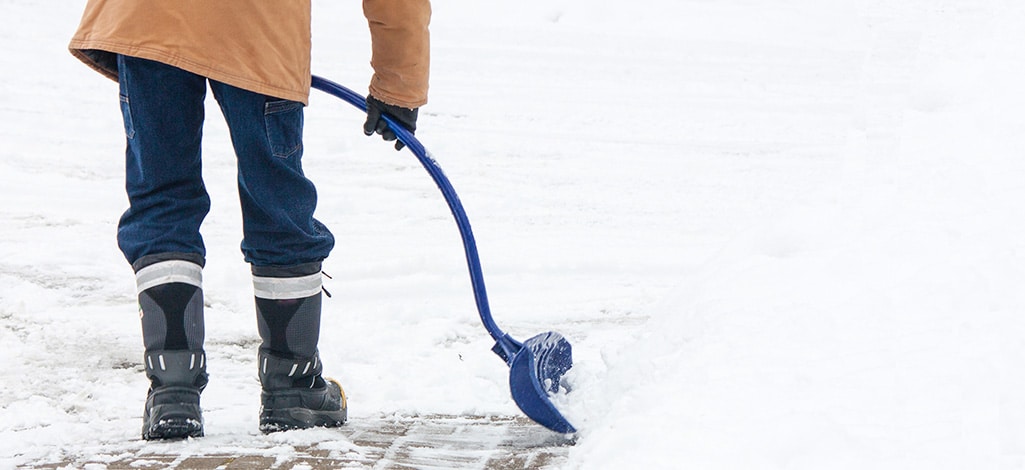In Der v. Zhao, 2019 BCSC 1996, the defendant homeowners brought a summary trial application to dismiss the plaintiff’s action arising from an alleged slip and fall on an icy municipal sidewalk adjacent to the defendants home. The plaintiff had initially brought the City of Burnaby (the “City”) into the action as another defendant by way of an Amended Notice of Civil Claim. However, after an examination for discovery of a representative of the City, the Plaintiff discontinued his action against it. This was presumably based on the City’s policy decision to adopt a bylaw placing sidewalk clearing responsibilities on neighboring landowners.
The Plaintiff initially claimed against the defendants under the Occupiers Liability Act (“OLA”) as well as common law negligence. However, the plaintiff later properly abandoned his arguments that the defendants were occupiers of the sidewalk under the OLA and solely based his claim in negligence, alleging that the defendants, “failed in their attempt to clear snow and/or ice in the days preceding the Fall, and thereby created a hazardous, slippery sidewalk that was not visible to a reasonable pedestrian”.
The plaintiff relied on affidavit evidence from himself and a fire fighter who assisted him after the incident. In addition, the plaintiff tendered an expert report from an accident reconstruction engineer who opined that, a) ice was present at the time of the incident and that b) the alleged actions or inactions of the defendants likely caused the dangerous conditions outside their residence.
The defendants relied on their own affidavit evidence that they had moved into the home in front of the sidewalk in the days preceding the incident; they had shovelled the sidewalk in previous days in order to comply with city bylaws; and had salted the sidewalk in the morning to make it safer for the movers.
The Court’s main analysis was on the threshold issue of whether the defendants owed the plaintiff a duty of care. In submissions, the Plaintiff acknowledged that breach of the City bylaw, which required an owner or occupier of property abutting a municipal sidewalk to clear it of ice and snow by 10:00 a.m. each day, does not create civil liability against the property owner to a third party using the sidewalk. This is a well-established principle based on cases such as Cullinane v. Prince George (City), 2000 BCSC 1089, and Bongiardina v. York (Regional Municipality) (2000), 49 O.R. (3d) 641 (C.A.). The plaintiff instead argued that a duty of care could be established in this case based on the defendants’ voluntary assumption of the responsibility for shovelling the sidewalk despite the fact that they would, otherwise, have no legal obligation to do so. The plaintiff argued, by way of his expert report, that, had the sidewalk not been shovelled, it might have provided some traction and that a “bare” sidewalk is vulnerable to the kind of melting that later leads to black ice.
The Defendants relied on precedent, citing Bongiardina and the cases following it, which held that there is no common law duty on property owners to clear snow and ice from public sidewalks adjacent to the property: Bongiardina at para. 19; Kluane v. Chasse, 2001 ABQB 244 at para. 5, aff’d 2003 ABCA 30. The Ontario Court of Appeal in Bongiardina outlined two exceptions to this principle at paras. 20–21: first, if the property owner assumes control of the adjacent public property; and second, if conditions or activities taking place on his or her property flow off the property and cause injury to persons nearby. Neither applied to the circumstances in this case.
The Court accepted the defendants’ argument and found that the plaintiff had failed to establish that the defendants owed him a duty of care and that, if there is no duty of care owed, then an examination of the standard of care is not necessary.
The Court also noted the potential policy consequences of the plaintiff’s voluntary assumption argument, stating that if “property owners who do not clear sidewalks abutting their properties have no legal responsibility for potential resulting danger on those sidewalks, but those who comply with municipal snow removal bylaws expose themselves to liability, the result would be that property owners would have an incentive not to make any efforts to comply with snow removal bylaws…The potential loss of the assistance of private property owners in snow removal efforts out of fear of the potential legal ramifications would be likely to cause more danger than it would prevent.”
In summary, the City effectively protected itself against liability by creating a winter maintenance policy that included a bylaw placing responsibility for clearing sidewalks on adjacent landowners. This case highlights that this transfer of responsibility does not necessarily transfer the legal liability to the landowner. The task for a plaintiff seeking to establish liability will be to determine if the neighbouring landowner exerted enough control over the sidewalk area so as to be considered an occupier or if the hazard in question can be linked to acts or omissions of the landowner on their own property.


